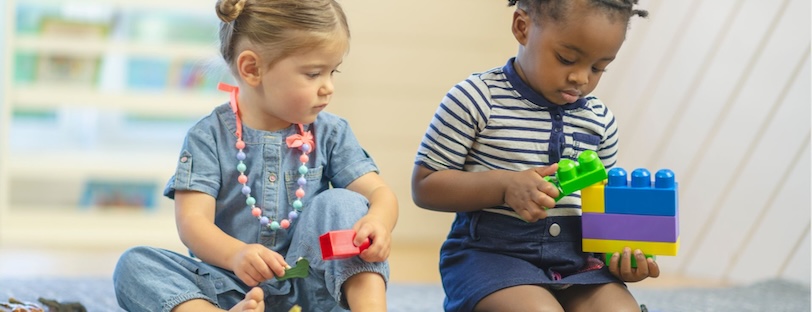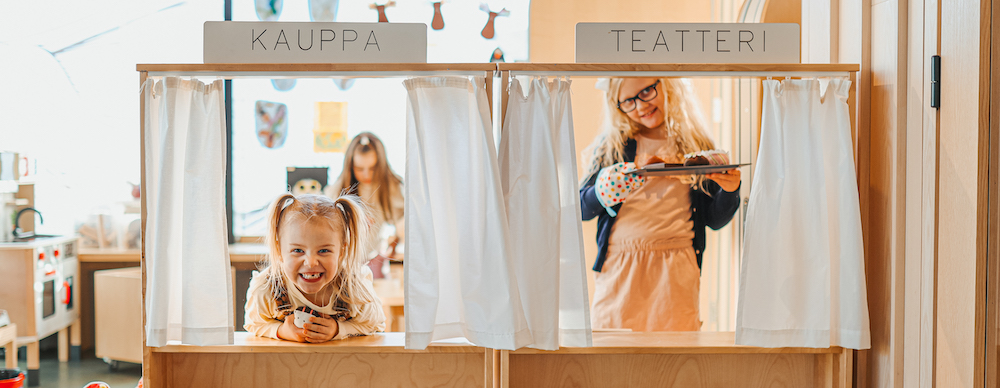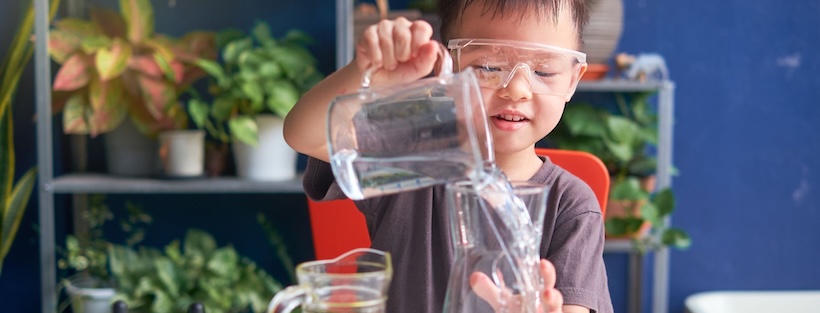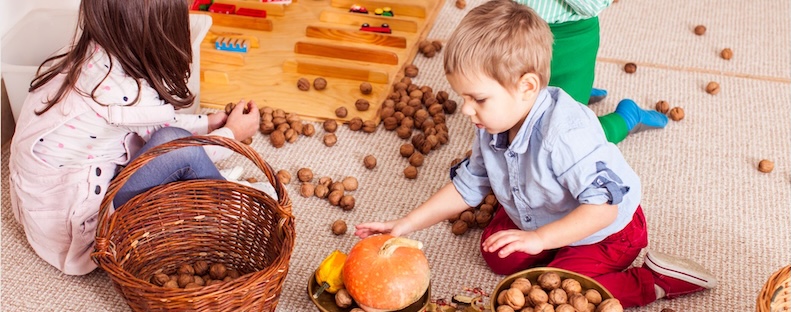Transitioning from rote learning to experiential learning requires a shift in mindset, teaching methods, and classroom environment. Finnish preschools provide an excellent example of how experiential learning can be successfully implemented. The Finnish education model is based on playful learning, child-led exploration, and holistic development. Unlike traditional preschools that focus on early academic performance, Finnish preschools prioritize learning through play, discovery, and real-world experiences—and Indian preschools can adopt many of these principles while aligning them with local cultural and curriculum requirements.
Step 1: Shift from Teacher-Centered to Child-Centered Learning
One of the most significant differences between the Finnish approach and traditional Indian preschools is the role of the teacher. In a rote-learning system, teachers act as instructors who deliver information. In an experiential learning environment, teachers become facilitators who guide children through self-directed exploration.
🔹 How to Apply This in Your Preschool?
- Encourage child-led learning by letting children choose activities based on their interests.
- Instead of explaining a concept, ask open-ended questions like: "What do you think will happen if we mix these colors?"
- Give children time to explore and make mistakes instead of providing immediate answers.
- Observe children's natural curiosity and use it as a foundation for learning.
✅ Example: Instead of teaching shapes through memorization, provide building blocks and let children discover and categorize different shapes through play.

Step 2: Create a Play-Based Curriculum with Hands-On Learning
In Finland, play is the most essential way for children to learn. Learning activities are designed to be fun, engaging, and developmentally appropriate. This approach contrasts with the preschool tradition of early academic pressure, where children are often required to sit still and memorize information.
🔹 How to Apply This in Your Preschool?
- Replace traditional worksheets with interactive activities like storytelling, puzzles, and sensory play.
- Use themes (e.g., nature, animals, space) to design multidisciplinary learning experiences.
- Encourage role-playing to teach real-life concepts (e.g., a "pretend restaurant" to practice math skills).
- Create outdoor learning opportunities where children explore nature and learn through movement.
✅ Example: Instead of teaching numbers through repetition, organize a "market day" where children pretend to buy and sell fruits while counting money.

Step 3: Train Teachers in Experiential Learning Methods
A successful transition to experiential learning requires teachers to understand and embrace this approach. In Finland, preschool teachers are trained in child psychology, play-based pedagogy, and creative teaching methods. They learn how to observe, support, and guide children's learning rather than simply delivering lessons.
🔹 How to Apply This in Your Preschool?
- Conduct teacher training workshops on experiential learning methods.
- Encourage teachers to observe how children interact and learn naturally.
- Teach alternative assessment methods (e.g., portfolio assessments, storytelling-based evaluation).
- Introduce collaborative lesson planning so teachers can share experiential learning ideas.
✅ Example: A science teacher can be trained to guide children through simple experiments rather than teaching science only from textbooks.

Step 4: Use Learning Materials That Encourage Exploration
Finnish preschools avoid rigid textbooks for young children and instead use a variety of learning materials that stimulate curiosity. These include Montessori tools, nature-based resources, digital learning apps, and creative play materials. The goal is to provide children with hands-on experiences that develop problem-solving and critical thinking skills.
🔹 How to Apply This in Your Preschool?
- Use open-ended toys like building blocks, art supplies, and sensory bins.
- Incorporate real-world materials like measuring cups, leaves, and household objects.
- Introduce interactive digital tools that support playful learning.
- Encourage collaborative projects that require teamwork and problem-solving.
✅ Example: Instead of teaching about farms through a textbook, create a mini farm corner in the classroom where children can touch the soil, plant seeds, and observe growth.

Step 5: Rethink Assessment – Move Beyond Memorization
In traditional Indian preschools, assessment is often based on how well a child can repeat information. Finnish preschools, however, use qualitative assessments that focus on observation, participation, and creativity rather than written tests. The goal is to assess how well children engage, explore, and express their understanding.
🔹 How to Apply This in Your Preschool?
- Replace exams with teacher observations and learning portfolios.
- Use photo documentation to track children's progress.
- Encourage children to express their knowledge through storytelling, drawings, and presentations.
- Provide verbal feedback and positive reinforcement instead of numeric grades.
✅ Example: Children could create a story about a jungle adventure using toy animals and artwork instead of a formal test on animals.
.png)
Step 6: Involve Parents in the Learning Process
In Finland, parents play an active role in supporting learning at home. Schools maintain open communication with families, sharing insights on how children learn through play and encouraging hands-on activities at home. In India, where academic success is highly valued, parents may initially be skeptical about experiential learning. Therefore, educating parents is key to a successful transition.
🔹 How to Apply This in a Preschool?
- Conduct parent workshops explaining the benefits of experiential learning.
- Share weekly learning updates with photos of children engaging in activities.
- Provide suggested play-based learning activities that parents can try at home.
- Organize family engagement days where parents participate in classroom activities.
✅ Example: Instead of giving written homework, send a home activity guide where parents and children bake together to explore measurement and counting.

Final Thoughts: Bringing the Finnish Approach to Indian Preschools
Inspired by the Finnish playful learning model, experiential learning can transform early childhood education in your preschool. Preschoolers can nurture curiosity, creativity, and lifelong learning by moving away from rote memorization and embracing child-led, hands-on learning.
Key Takeaways for Academic Coordinators:
✅ Shift from teacher-led instruction to child-centered learning
✅ Create play-based and hands-on learning activities
✅ Train teachers in experiential and exploratory teaching methods
✅ Use interactive and real-world learning materials
✅ Replace memorization-based assessment with observational and creative evaluation
✅ Engage parents as partners in the learning journey
The transition may take time, but the impact will be long-lasting. Indian preschools that adopt experiential learning will enhance children’s academic readiness and help them develop essential life skills for the future.
Our previous blog discussed "Why experiential learning matters in preschools."
Schedule a free consultation call!
You can schedule a free consultation call with our CEO, Milla van der Burgh, to explore how Kindiedays can help you deliver high-quality, cost-effective, and scalable education solutions.

Schedule a free consultative call with Milla
I look forward to hearing from you.
.png)